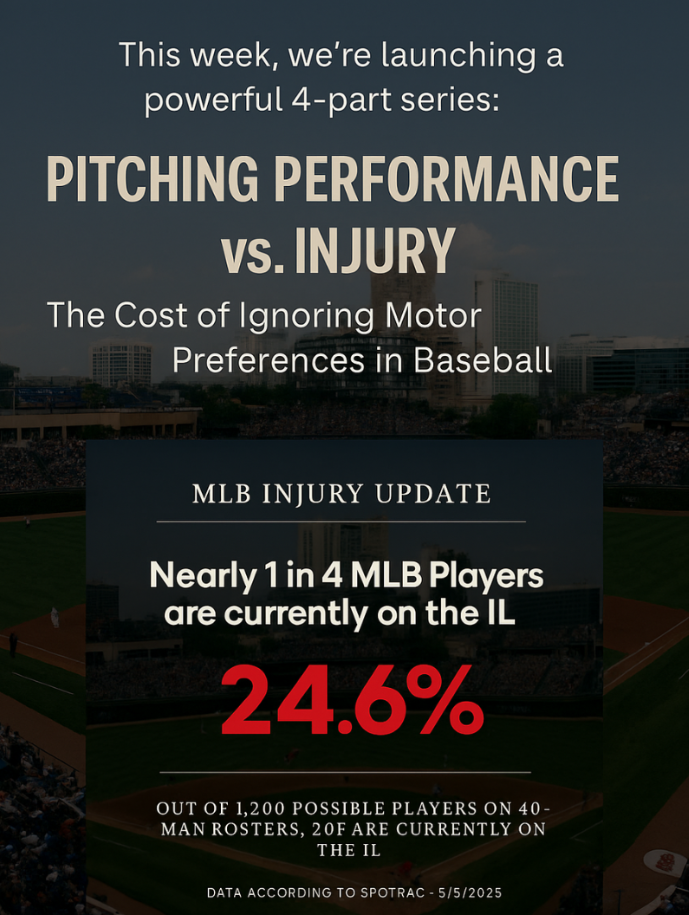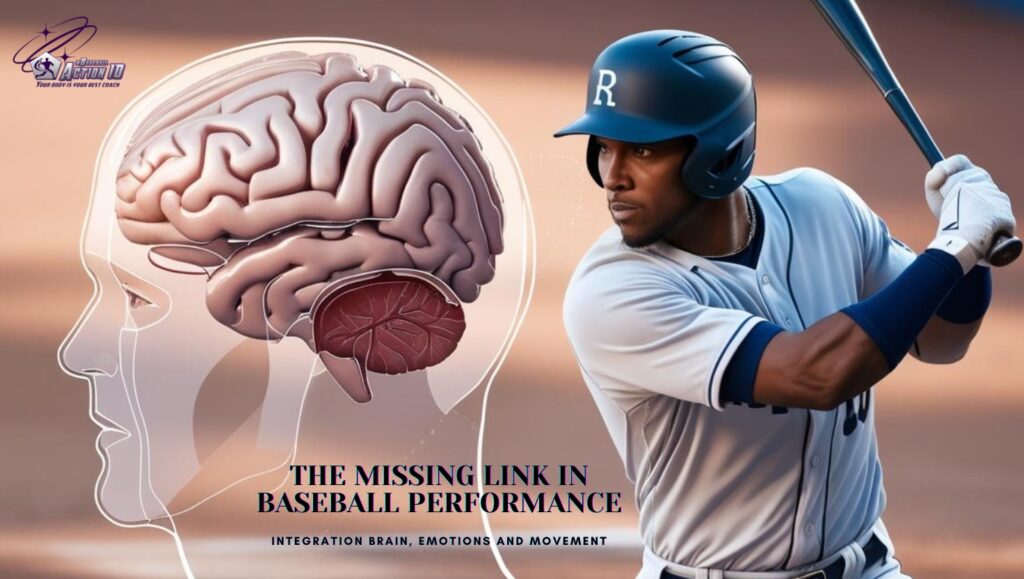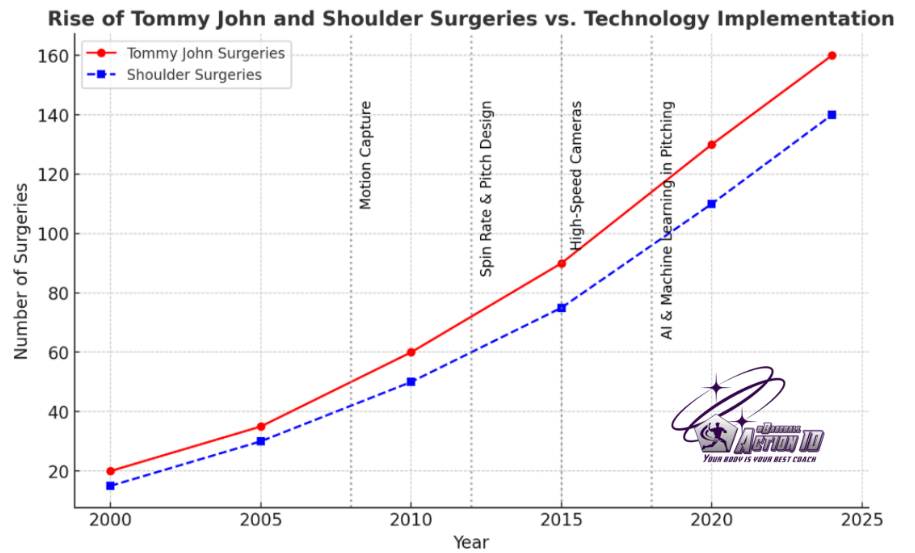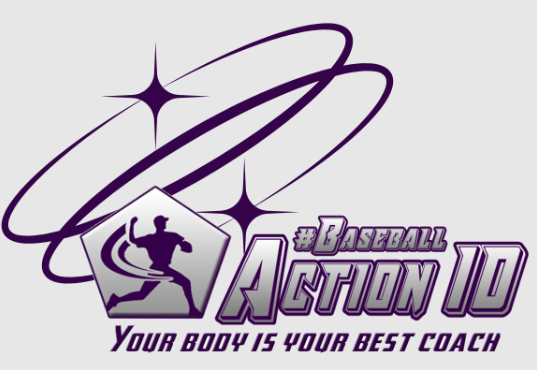Pitching Performance vs. Injury — The Cost of Ignoring Motor Preferences in Baseball

More Data. More Injuries. Less Clarity.
Why Modern Baseball Is Still Getting It Wrong — And What We Can Do About It
Walk into any Major League front office or elite training facility, and you’ll see the future: motion capture systems, force plates, wearable sensors, AI dashboards, and biomechanical models. Technology in baseball has never been more advanced. Pitchers are tracked, tested, analysed, and optimised down to the millisecond and millimetre.
And yet…
- Pitching injuries are rising.
- Player development is stuck.
- And athletes are breaking down — physically, mentally, and emotionally.
Something isn’t adding up.
“The definition of insanity is doing the same thing over and over again, but expecting different results.” – Albert Einstein
It’s time to ask a hard question:
Are we solving the wrong problems in the wrong way — and ignoring the one variable that really matters?
⚠️ The Misinformation Crisis in Player Development
Spend 10 minutes on YouTube or any social platform and you’ll see a familiar pattern:
- Coaches diagnosing movement based solely on visible output
- Content creators labelling athletes as “hip-dominant” or “rotational” without understanding why
- Biomechanists recommend identical mechanics for totally different bodies
It’s well-intentioned. But it’s wrong.
And more importantly, it’s incomplete.
🧬 What’s Missing? Motor Preferences.
These are not:
- ✖ “Styles”
- ✖ “Learned mechanics”
- ✖ “Bad habits”
- ✖ “Areas to optimise”
They are the natural movement codes of each individual, shaped by:
- Brain dominance and sensory processing
- Nervous system wiring
- Anatomical structure
- Emotional responses under stress
- Past experiences — both athletic and personal
This isn’t just what the athlete does. It’s who they are.
🎯 “We Individualise Based on Output” — And That’s the Problem
Not long ago, I asked a respected MLB player development leader how their system personalised training. The response?
Not long ago, I asked a respected MLB player development leader how their system personalized training. The response?
That’s the mainstream approach. But here’s the issue:
- ✅ Technology shows how someone moves.
- ❌ It doesn’t explain why they move that way.
You can’t individualise from the outside in.
You must understand the system from the inside out.
We’re not training robots.
We’re developing human beings, each with their internal operating system.
🧠 The Brain Is Not an Accessory — It’s the Main Driver
Every pitch is shaped not just by mechanics, but by:
- Perception
- Decision-making
- Confidence
- Stress
- Emotional regulation
- Memory
Anxiety changes muscle tone.
Doubt tightens timing.
Emotion alters release points.
That pitcher who looks flawless in bullpens but unravels in games?
That’s not a mechanical flaw — it’s a neuro-emotional one.
When we treat pitching like a physics equation, we miss the complex, real-time interaction between the body, brain, and environment
You don’t throw a baseball with your arm.
You throw it with your entire system.
🔁 Tech + Data + Biomechanics ≠ Understanding the Athlete
Let’s be clear — technology is powerful, and biomechanics matters.
But when we use tools without context, they become dangerous:
- Forcing players into cookie-cutter “ideal” models
- Misreading visible outputs as internal intentions
- Labelling natural variation as dysfunction
- Ignoring the human beneath the data
We’ve become obsessed with what’s measurable, and in doing so, we’ve lost sight of what’s meaningful.
🧩 Real Player Development Starts With the Individual
What if we flipped the script?
- What if we started with who the athlete is, not what the numbers say?
- What if we respected their motor preferences before prescribing a technique?
- What if we trained the brain and body in harmony, not in conflict?
- What if we treated emotion and cognition as performance factors, not distractions?
This isn’t theory. It’s real.
Every elite athlete operates within their optimal neuro-motor zone — often unconsciously.
As coaches, trainers, and decision-makers, our job isn’t to overwrite that system.
It’s to understand it, protect it, and build on it.
🧨 The Takeaway
The data revolution in baseball isn’t wrong.
It’s just incomplete.
If we truly want to reduce injuries, unlock performance, and develop athletes sustainably, we must integrate:

- ✅ Motor preferences
- ✅ Neuroscience and cognition
- ✅ Emotional regulation
- ✅ Meaningful biomechanics
- ✅ Technology that serves the individual, not erases them
This isn’t a choice between science and intuition.
It’s about bringing the whole athlete into the picture.
👊 Let’s Raise the Standard — Together
The future of player development isn’t more metrics.
It’s a deeper understanding.
Let’s stop chasing performance through one-size-fits-all models —
and start building it through real individuality.
Because at the highest level…
The edge is not in doing more.
It’s in knowing better.

